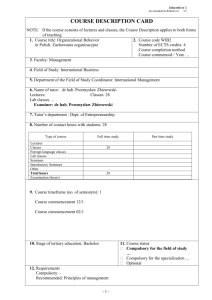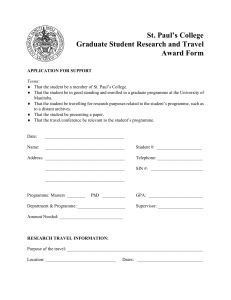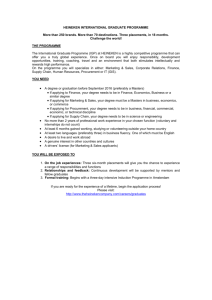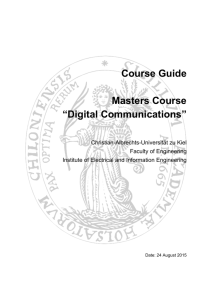Graduate Programme
advertisement
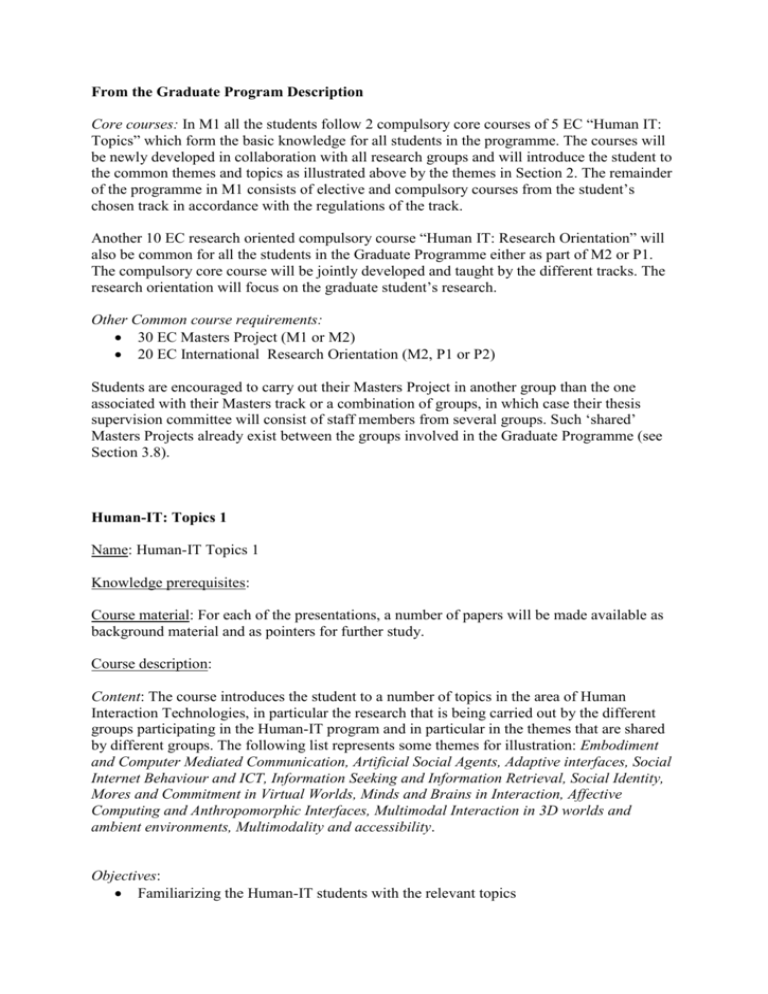
From the Graduate Program Description Core courses: In M1 all the students follow 2 compulsory core courses of 5 EC “Human IT: Topics” which form the basic knowledge for all students in the programme. The courses will be newly developed in collaboration with all research groups and will introduce the student to the common themes and topics as illustrated above by the themes in Section 2. The remainder of the programme in M1 consists of elective and compulsory courses from the student’s chosen track in accordance with the regulations of the track. Another 10 EC research oriented compulsory course “Human IT: Research Orientation” will also be common for all the students in the Graduate Programme either as part of M2 or P1. The compulsory core course will be jointly developed and taught by the different tracks. The research orientation will focus on the graduate student’s research. Other Common course requirements: 30 EC Masters Project (M1 or M2) 20 EC International Research Orientation (M2, P1 or P2) Students are encouraged to carry out their Masters Project in another group than the one associated with their Masters track or a combination of groups, in which case their thesis supervision committee will consist of staff members from several groups. Such ‘shared’ Masters Projects already exist between the groups involved in the Graduate Programme (see Section 3.8). Human-IT: Topics 1 Name: Human-IT Topics 1 Knowledge prerequisites: Course material: For each of the presentations, a number of papers will be made available as background material and as pointers for further study. Course description: Content: The course introduces the student to a number of topics in the area of Human Interaction Technologies, in particular the research that is being carried out by the different groups participating in the Human-IT program and in particular in the themes that are shared by different groups. The following list represents some themes for illustration: Embodiment and Computer Mediated Communication, Artificial Social Agents, Adaptive interfaces, Social Internet Behaviour and ICT, Information Seeking and Information Retrieval, Social Identity, Mores and Commitment in Virtual Worlds, Minds and Brains in Interaction, Affective Computing and Anthropomorphic Interfaces, Multimodal Interaction in 3D worlds and ambient environments, Multimodality and accessibility. Objectives: Familiarizing the Human-IT students with the relevant topics Familiarizing the Human-IT students with different methodological approaches Teaching methods: Series of lectures by key researchers Assessment: Students will need to attend at least X presentations in the Human-IT colloquium series and write an essay about one or more of the presentations they have attended. [or maybe a paper that integrates themes from the presentations? Credits: 5 Human-IT: Topics 2 Name: Human-IT: Topics 2 Knowledge prerequisites: Human-IT: Topics 1 Course material: Set of research papers. Course description: Content: The course introduces the Human-IT student to the practice of doing Human-IT research. The student assists a PhD student, a postdoc or senior researcher with their research. [I think we should also have a number of research oriented lectures/practicals] If we allow to assist with one researcher, there will be no overview of research methods available. I think we need that. Objectives: Introducing the Human-IT student to the practice of Human-IT research Providing an overview of research methods used in H-IT research Teaching methods: Lectures, apprenticeship. Assessment: Write the method section of a paper, based on a given research question. Credits: 5 Human-IT: Research Orientation Name: Human-IT Research Orientation Knowledge prerequisites: Human-IT Topics 1 and 2 Course material: Course description: Content: In this course, the Human-IT student learns to write a research proposal. Objectives: Teaching methods: Assessment: Credits: 10
